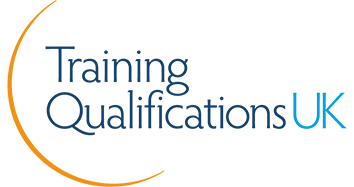Business Functions
 97.5%
97.5%
- SALE Savings End Midnight Wednesday 16th April
- SALE Savings End Midnight Wednesday 16th April
Business Functions
This course presents an introductory over-view of the study of business organisations. The course examines business organisations in terms of their missions and values, their structures and cultures and the key organisational processes which underpin business activity. Although organisations are essentially unique, they also share common features which are explored in detail.
We also present a number of basic models for analysing business organisations and their performance. Business organisations can only be fully understood if we know how they interact with their environments and the course presents a number of ideas for analysing their interaction with their competitors, their markets and the wider set of prevailing circumstances which influence business performance.
Unit 1: The Nature of Organisations
Introduction
Objectives
Section 1: Organisations in Business
Introduction
1.1 What is an organisation?
1.2 What do organisations do?
1.3 Organisations as systems
Summary
Section 2: Organisational Growth and Structure
Introduction
2.1 Growth
2.2 Growth in today's business world
2.3 Organisational structure
Summary
Section 3: The Organisation as a Legal Entity
Introduction
3.1 Sole traders
3.2 Partnerships
3.3 Incorporated companies
3.4 Charities
Summary 38
Section 4: Business Functions
Introduction
4.1 Porter's value chain
4.2 Inbound and outbound logistics
4.3 Operations (production)
4.4 Sales and marketing
4.5 Service
4.6 Infrastructure
4.7 Human resource management
4.8 Research and development
4.9 Procurement
4.10 Management information systems
Summary
Section 5: Organisational Culture
Introduction
5.1 National influences
5.2 What is organisational culture?
5.3 Culture change
Summary
Section 6: Information
Introduction
6.1 Nature of information
6.2 Sources of information
6.3 Accuracy of information
6.4 Information flows and management
6.5 Communication
Summary
Unit Review Activity
Unit Summary
References
Recommended Reading
Answers to Review Activities
Unit 2: The Business Environment
Introduction
Objectives
Section 1: Environmental Opportunities and Threats
Introduction
1.1 The organisation and its environment
1.2 Environmental analysis
Summary
Section 2: Social Environment
Introduction
2.1 Demographics and organisations
2.2 Social structures and behaviour patterns
Summary
Section 3: Economic Environment
Introduction
3.1 Macroeconomy and governments
3.2 Industrial environment
3.3 Changing economic policies
Summary
Section 4: Political Environment
Introduction
4.1 Politics and power
4.2 International business environment
4.3 Environmentalism and social responsibility
Summary
Section 5: Technological Environment
Introduction
5.1 The new industrial revolution
5.2 New products and processes
Summary
Unit Review Activity
Unit Summary
References
Recommended Reading
Answers to Review Activities
Unit 3: Competition and Change
Introduction
Objectives
Section 1: Stakeholders
Introduction
1.1 Who and what are stakeholders?
1.2 Conflicting interests
1.3 Stakeholder power
Summary
Section 2: Market Forces
Introduction
2.1 Industry life cycle
2.2 Porter's five forces
Summary
Section 3: Conducting an Environmental Analysis
Introduction
3.1 Monitoring the environment
3.2 Using environmental information
Summary
Section 4: Change and Competitive Advantage
Introduction
4.1 Responding to the PEST environment
4.2 Responding to the competitive environment
4.3 Implementing change
4.4 Future trends
Unit Review Activity
Unit Summary
References
Recommended Reading
Answers to Review Activities
Unit 4: Marketing
Introduction
Objectives
Section 1: Introduction to Marketing
Introduction
1.1 What is marketing?
1.2 The marketing concept
1.3 Marketing management
Summary
Section 2: Markets and Customers
Introduction
2.1 Customers
2.2 Competition
2.3 Market segmentation
2.4 Marketing research
2.5 Marketing research process
Summary
Section 3: The Marketing Mix
Introduction
3.1 What is the marketing mix?
3.2 Products, services and benefits
3.3 Product classification
3.4 Product life cycle
3.5 Product mix
3.6 Setting prices
3.7 Role of distribution
3.8 Promotion
Summary
Unit Review Activity
Unit Summary
References
Recommended Reading
Answers to Review Activities
Unit 5: Operations and Operations Management
Introduction
Objectives
Section 1: What are Operations?
Introduction
1.1 Definitions
1.2 Transformation for the customer
1.3 Value added
Summary
Section 2: Running Operations
Introduction
2.1 The operations challenge
2.2 Activities within operations
Summary
Section 3: Design within Operations
Introduction
3.1 Product design and development
3.2 System and process design
3.3 Quality and quality management
Summary
Unit Review Activity
Unit Summary
References
Recommended Reading
Answers to Review Activities
Unit 6: Logistics
Introduction
Objectives
Section 1: What is Logistics?
Introduction
1.1 Origins of logistics
1.2 Defining logistics
1.3 Logistics strategy and information technology
Summary
Section 2: Logistics in Practice: a Factory Visit
Introduction
2.1 Factory tour
2.2 Stock control systems
2.3 Physical distribution
Summary
Section 3: Controlling Supply: Materials Planning and Control
Introduction
3.1 Scope and purpose of materials control
3.2 Constraints on material planning and control
3.3 Reordering stock
3.4 Just in time
Summary
Section 4: Supply Chain Management and Distribution Systems
Introduction
4.1 What is supply chain management?
4.2 Relationships in supply chains and partnership sourcing
Summary
Section 5: Strategy, Performance and Key Measures
Introduction
5.1 Logistics strategy, fit and performance
5.2 Benchmarking
Summary
Unit Review Activity
Unit Summary
References
Recommended Reading
Answers to Review Activities
Unit 7: Human Resource Management
Introduction
Objectives
Section 1: Nature of Human Resource Management and its Function
Introduction
1.1 Historical aspects
1.2 HRM or personnel management?
1.3 The function
Summary
Section 2: Employee Resourcing
Introduction
2.1 What is human resource planning?
2.2 Recruitment and selection
Summary
Section 3: Employee Training and Development
Introduction
3.1 The training process
3.2 Staff assessment and appraisal
Summary
Section 4: Employee Relations
Introduction
4.1 Historical aspects
4.2 Procedures
4.3 Legislation and policies
Summary
Unit Review Activity
Unit Summary
References
Recommended Reading
Answers to Review Activities
Unit 8: Business Strategy
Introduction
Objectives
Section 1: Environment, Values and Resources
Introduction
1.1 Values
1.2 Resources
1.3 Environment
Summary
Section 2: Strategic Planning
Introduction
2.1 Types of business strategies
2.2 Choosing a strategy and setting targets
2.3 Implementing strategy
Summary
Unit Review Activity
Unit Summary
References
Recommended Reading
Answers to Review Activities
Unit 9: Business Planning and Project Management
Introduction
Objectives
Section 1: Drawing up a Business Plan
Introduction
1.1 What is a business plan?
1.2 Creating the business plan
Summary
Section 2: Implementing the Business Plan
Introduction
2.1 Initial planning
2.2 Creating a project plan
2.3 Management of progress, costs and risks
Summary
Unit Review Activity
Unit Summary
References
Recommended Reading
Answers to Review Activities
For a more detailed syllabus on this course, click here
Modules
Assessment Method
After each lesson there will be a question paper, which needs to be completed and submitted to your personal tutor for marking. This method of continual assessment ensures that your personal tutor can consistently monitor your progress and provide you with assistance throughout the duration of the course.
Entry Requirements
There is no experience or previous qualifications required for enrolment on this course. It is available to all students, of all academic backgrounds.
All course fees, inclusive of all payment plans including our Premium Credit Limited option, must be settled before certification can be ordered.
*You will have access to the course for 24 months.
On successful completion of your course you will receive the learndirect Certificate of Completion of Training in Business Functions.
Your course certificate will also state the number of CPD points/hours the course is eligible for.
View a sample of the certificate (opens in new window)
learndirect is one of the largest integrated providers of courses and qualifications, training, and employment services in the UK
- Each year around 6,000 businesses equip their staff for success with learndirect
- learndirect have helped more than 75,000 businesses equip their employees with the skills needed to improve productivity.
- Almost 700,000 maths and English test passes have been achieved with learndirect.
- 300,000 people fulfilled their career ambitions last year with learndirect.
- Over 250,000 apprentices have achieved with learndirect.
- SALE Savings End Midnight Wednesday 16th April
- SALE Savings End Midnight Wednesday 16th April
Business Functions
This course presents an introductory over-view of the study of business organisations. The course examines business organisations in terms of their missions and values, their structures and cultures and the key organisational processes which underpin business activity. Although organisations are essentially unique, they also share common features which are explored in detail.
We also present a number of basic models for analysing business organisations and their performance. Business organisations can only be fully understood if we know how they interact with their environments and the course presents a number of ideas for analysing their interaction with their competitors, their markets and the wider set of prevailing circumstances which influence business performance.
Unit 1: The Nature of Organisations
Introduction
Objectives
Section 1: Organisations in Business
Introduction
1.1 What is an organisation?
1.2 What do organisations do?
1.3 Organisations as systems
Summary
Section 2: Organisational Growth and Structure
Introduction
2.1 Growth
2.2 Growth in today's business world
2.3 Organisational structure
Summary
Section 3: The Organisation as a Legal Entity
Introduction
3.1 Sole traders
3.2 Partnerships
3.3 Incorporated companies
3.4 Charities
Summary 38
Section 4: Business Functions
Introduction
4.1 Porter's value chain
4.2 Inbound and outbound logistics
4.3 Operations (production)
4.4 Sales and marketing
4.5 Service
4.6 Infrastructure
4.7 Human resource management
4.8 Research and development
4.9 Procurement
4.10 Management information systems
Summary
Section 5: Organisational Culture
Introduction
5.1 National influences
5.2 What is organisational culture?
5.3 Culture change
Summary
Section 6: Information
Introduction
6.1 Nature of information
6.2 Sources of information
6.3 Accuracy of information
6.4 Information flows and management
6.5 Communication
Summary
Unit Review Activity
Unit Summary
References
Recommended Reading
Answers to Review Activities
Unit 2: The Business Environment
Introduction
Objectives
Section 1: Environmental Opportunities and Threats
Introduction
1.1 The organisation and its environment
1.2 Environmental analysis
Summary
Section 2: Social Environment
Introduction
2.1 Demographics and organisations
2.2 Social structures and behaviour patterns
Summary
Section 3: Economic Environment
Introduction
3.1 Macroeconomy and governments
3.2 Industrial environment
3.3 Changing economic policies
Summary
Section 4: Political Environment
Introduction
4.1 Politics and power
4.2 International business environment
4.3 Environmentalism and social responsibility
Summary
Section 5: Technological Environment
Introduction
5.1 The new industrial revolution
5.2 New products and processes
Summary
Unit Review Activity
Unit Summary
References
Recommended Reading
Answers to Review Activities
Unit 3: Competition and Change
Introduction
Objectives
Section 1: Stakeholders
Introduction
1.1 Who and what are stakeholders?
1.2 Conflicting interests
1.3 Stakeholder power
Summary
Section 2: Market Forces
Introduction
2.1 Industry life cycle
2.2 Porter's five forces
Summary
Section 3: Conducting an Environmental Analysis
Introduction
3.1 Monitoring the environment
3.2 Using environmental information
Summary
Section 4: Change and Competitive Advantage
Introduction
4.1 Responding to the PEST environment
4.2 Responding to the competitive environment
4.3 Implementing change
4.4 Future trends
Unit Review Activity
Unit Summary
References
Recommended Reading
Answers to Review Activities
Unit 4: Marketing
Introduction
Objectives
Section 1: Introduction to Marketing
Introduction
1.1 What is marketing?
1.2 The marketing concept
1.3 Marketing management
Summary
Section 2: Markets and Customers
Introduction
2.1 Customers
2.2 Competition
2.3 Market segmentation
2.4 Marketing research
2.5 Marketing research process
Summary
Section 3: The Marketing Mix
Introduction
3.1 What is the marketing mix?
3.2 Products, services and benefits
3.3 Product classification
3.4 Product life cycle
3.5 Product mix
3.6 Setting prices
3.7 Role of distribution
3.8 Promotion
Summary
Unit Review Activity
Unit Summary
References
Recommended Reading
Answers to Review Activities
Unit 5: Operations and Operations Management
Introduction
Objectives
Section 1: What are Operations?
Introduction
1.1 Definitions
1.2 Transformation for the customer
1.3 Value added
Summary
Section 2: Running Operations
Introduction
2.1 The operations challenge
2.2 Activities within operations
Summary
Section 3: Design within Operations
Introduction
3.1 Product design and development
3.2 System and process design
3.3 Quality and quality management
Summary
Unit Review Activity
Unit Summary
References
Recommended Reading
Answers to Review Activities
Unit 6: Logistics
Introduction
Objectives
Section 1: What is Logistics?
Introduction
1.1 Origins of logistics
1.2 Defining logistics
1.3 Logistics strategy and information technology
Summary
Section 2: Logistics in Practice: a Factory Visit
Introduction
2.1 Factory tour
2.2 Stock control systems
2.3 Physical distribution
Summary
Section 3: Controlling Supply: Materials Planning and Control
Introduction
3.1 Scope and purpose of materials control
3.2 Constraints on material planning and control
3.3 Reordering stock
3.4 Just in time
Summary
Section 4: Supply Chain Management and Distribution Systems
Introduction
4.1 What is supply chain management?
4.2 Relationships in supply chains and partnership sourcing
Summary
Section 5: Strategy, Performance and Key Measures
Introduction
5.1 Logistics strategy, fit and performance
5.2 Benchmarking
Summary
Unit Review Activity
Unit Summary
References
Recommended Reading
Answers to Review Activities
Unit 7: Human Resource Management
Introduction
Objectives
Section 1: Nature of Human Resource Management and its Function
Introduction
1.1 Historical aspects
1.2 HRM or personnel management?
1.3 The function
Summary
Section 2: Employee Resourcing
Introduction
2.1 What is human resource planning?
2.2 Recruitment and selection
Summary
Section 3: Employee Training and Development
Introduction
3.1 The training process
3.2 Staff assessment and appraisal
Summary
Section 4: Employee Relations
Introduction
4.1 Historical aspects
4.2 Procedures
4.3 Legislation and policies
Summary
Unit Review Activity
Unit Summary
References
Recommended Reading
Answers to Review Activities
Unit 8: Business Strategy
Introduction
Objectives
Section 1: Environment, Values and Resources
Introduction
1.1 Values
1.2 Resources
1.3 Environment
Summary
Section 2: Strategic Planning
Introduction
2.1 Types of business strategies
2.2 Choosing a strategy and setting targets
2.3 Implementing strategy
Summary
Unit Review Activity
Unit Summary
References
Recommended Reading
Answers to Review Activities
Unit 9: Business Planning and Project Management
Introduction
Objectives
Section 1: Drawing up a Business Plan
Introduction
1.1 What is a business plan?
1.2 Creating the business plan
Summary
Section 2: Implementing the Business Plan
Introduction
2.1 Initial planning
2.2 Creating a project plan
2.3 Management of progress, costs and risks
Summary
Unit Review Activity
Unit Summary
References
Recommended Reading
Answers to Review Activities
For a more detailed syllabus on this course, click here
Modules
Assessment Method
After each lesson there will be a question paper, which needs to be completed and submitted to your personal tutor for marking. This method of continual assessment ensures that your personal tutor can consistently monitor your progress and provide you with assistance throughout the duration of the course.
Entry Requirements
There is no experience or previous qualifications required for enrolment on this course. It is available to all students, of all academic backgrounds.
All course fees, inclusive of all payment plans including our Premium Credit Limited option, must be settled before certification can be ordered.
*You will have access to the course for 24 months.
Qualifications
On successful completion of your course you will receive the learndirect Certificate of Completion of Training in Business Functions.
Your course certificate will also state the number of CPD points/hours the course is eligible for.
View a sample of the certificate (opens in new window)
learndirect is one of the largest integrated providers of courses and qualifications, training, and employment services in the UK
- Each year around 6,000 businesses equip their staff for success with learndirect
- learndirect have helped more than 75,000 businesses equip their employees with the skills needed to improve productivity.
- Almost 700,000 maths and English test passes have been achieved with learndirect.
- 300,000 people fulfilled their career ambitions last year with learndirect.
- Over 250,000 apprentices have achieved with learndirect.
 97.5%
97.5%
learning
learning hours





















 If you find this course cheaper anywhere
If you find this course cheaper anywhere

